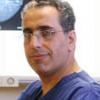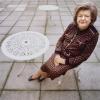Professor Kefah Mokbel, world-leading breast cancer specialist, explains how unconventional cleavage-sparing mastectomy can leave women at risk of the recurrence of cancer.
The cleavage preserving mastectomy mentioned in the recent media reports refers to an incomplete form of mastectomy, where a significant proportion of breast tissue is deliberately left by the surgeon in the inner aspect of the breast in order to give the patient breast cleavage. This occured even in women not undergoing immediate reconstruction. Women who had this type of unorthodox mastectomy have an increased risk of breast cancer recurrence especially if they did not receive radiotherapy to the residual breast tissue. Therefore, such patients require regular check-ups including mammography, ultrasound scans and/or MRI to detect any recurrence at an early stage.
By contrast skin-sparing mastectomy represents total mastectomy with the preservation of the skin envelope of the breast, in order to optimise the aesthetic outcome of immediate reconstruction.
Skin-sparing mastectomy is oncologically safe and represents the gold standard for women undergoing immediate reconstruction. In this type of mastectomy breast cleavage is maintained by preserving the skin envelop of the breast and replacing the breast tissue with an implant or a flap. Numerous studies have demonstrated that this type of mastectomy has an equivalent clinical outcome to non-sparing mastectomy. Therefore, those women who had a skin sparing mastectomy combined with immediate reconstruction have a similar risk of local recurrence to those who had a modified radical mastectomy. The residual breast tissue left behind in skin sparing mastectomy and modified radical mastectomy is very tiny and is not associated with an increased risk of local recurrence.








